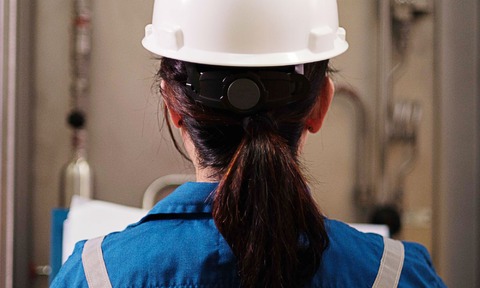How to Sample Gases and Volatile Liquids Properly
14 Jun 2023

Gases and volatile liquids used in your industrial fluid system must be of the highest quality and to monitor them, grab sampling is often necessary to validate that the product meets the appropriate standards, explaines Swagelok’s Matt Dixon
While grab sampling gases and volatile liquids poses some challenges, using the right techniques can help minimize mistakes and provide an accurate analysis of the quality of the process chemicals.
Basic Rules for Sampling
Below are some general rules to make sure grab sampling is done properly:
- The sample must represent the process, so take samples from the middle of the process pipe rather than at the beginning or end.
- The sample must be timely. Try keeping the amount of time in transport to a minimum.
- The sample must be pure. Avoid dead legs upstream and allow for adequate purging and flushing of the sampling system.
- Sampling must be safe, so clearly identify the proper procedures to limit the amount of contact technicians might have with the process fluids.
- Do not allow the sample to change phases.
Choose an appropriate cylinder
Since gases and volatile liquids are typically sampled under pressure, technicians should use sample cylinders for collection. Using cylinders also protects employees and the environment from potential leaks if the gas is toxic.
When choosing cylinders, there are a few features they should have, including:
- Easily operable quick connects
- Smooth internal neck transitions
- Proper material composition and finishes
- Incorporated bypass lines
- Durable design and construction
Cylinder assemblies with these characteristics will help the operator to capture a representative sample in an efficient and safe manner.
Properly fill the cylinder
Depending on the type of fluid being sampled, technicians will either fill the cylinder from the top or bottom. When sampling a gas, the cylinder should be filled from the top to flush any condensation in the line out through the bottom. On the other hand, for volatile liquids cylinders should be filled from the bottom to allow trapped gas to escape out the top of the cylinder. However, when sampling liquids in a cylinder, it is important to account for thermal expansion of the sample. This is often done with a simple outage tube, which can retain a small amount of gas in the cylinder and provide the liquid room to expand.
Frequently used sample cylinders may eventually show signs of operational wear and tear, so regular, proactive maintenance is essential. Minimally, they should be inspected once a year and pressure tested and after five years, and it is important to recertify the cylinders.
Minimise potential human error
Since grab sampling involves people taking fluids or gases from the process line, it is possible for mistakes to occur. By following a series of specific strategies, it is possible to limit the problems that human error might introduce into the sampling process.
- Documentation. Grab sampling panels may be available with an engraved placard on the panel, which can contain helpful details on how to operate the panel.
- Simplification. Grab sampling systems that are simple and intuitive to operate can additionally limit the potential for human error.
- Automation. Automating sample collection, while coming at a higher upfront cost, can further reduce human error.
In the end, grab sampling should provide facilities the confidence to know that they are producing high-quality products for end users. Using easy-to-use, properly designed sampling systems and providing clear instructions on how the sampling should be done will help achieve that goal.
Matt Dixon is the Application Commercialisation Manager for Swagelok Company.

